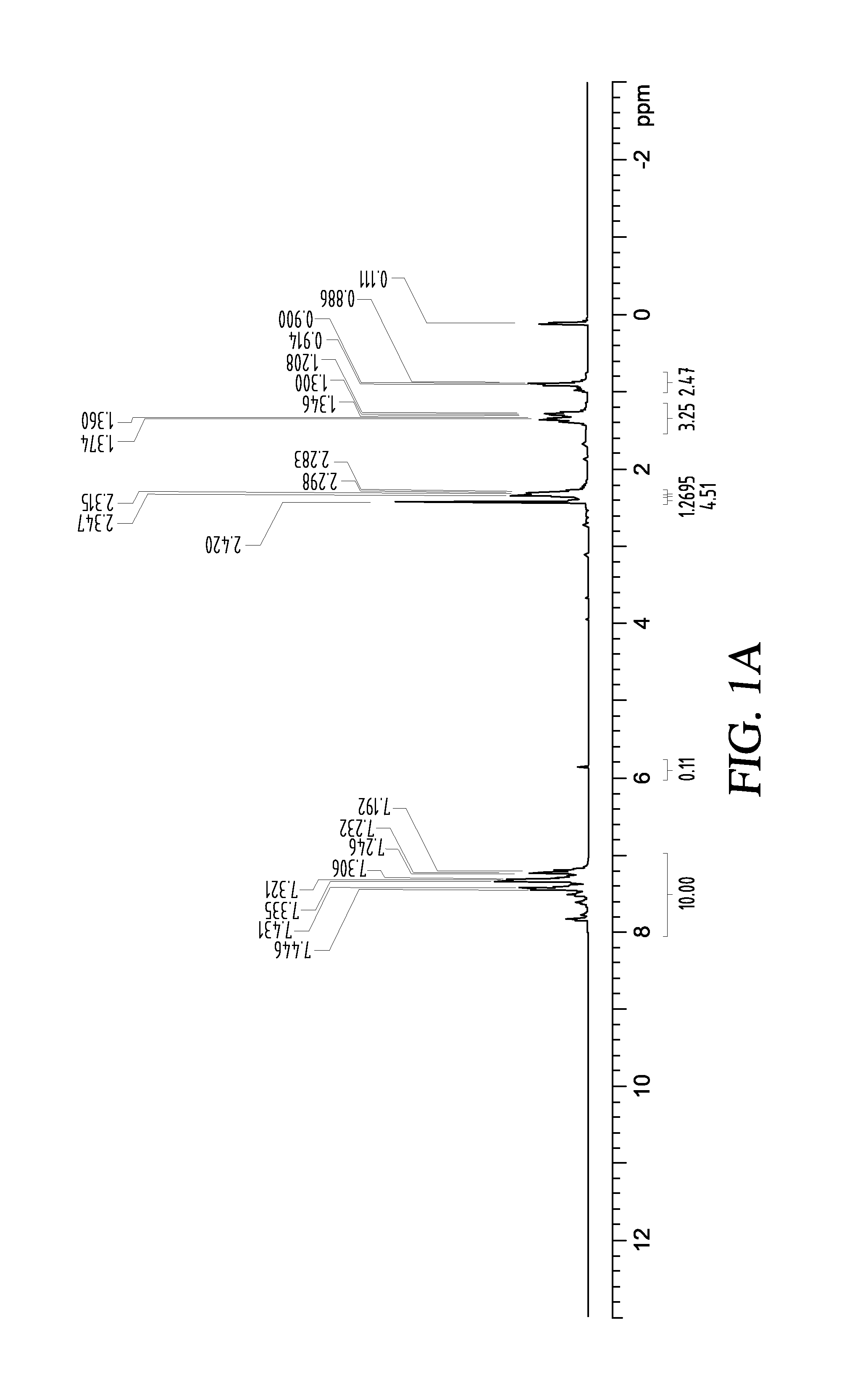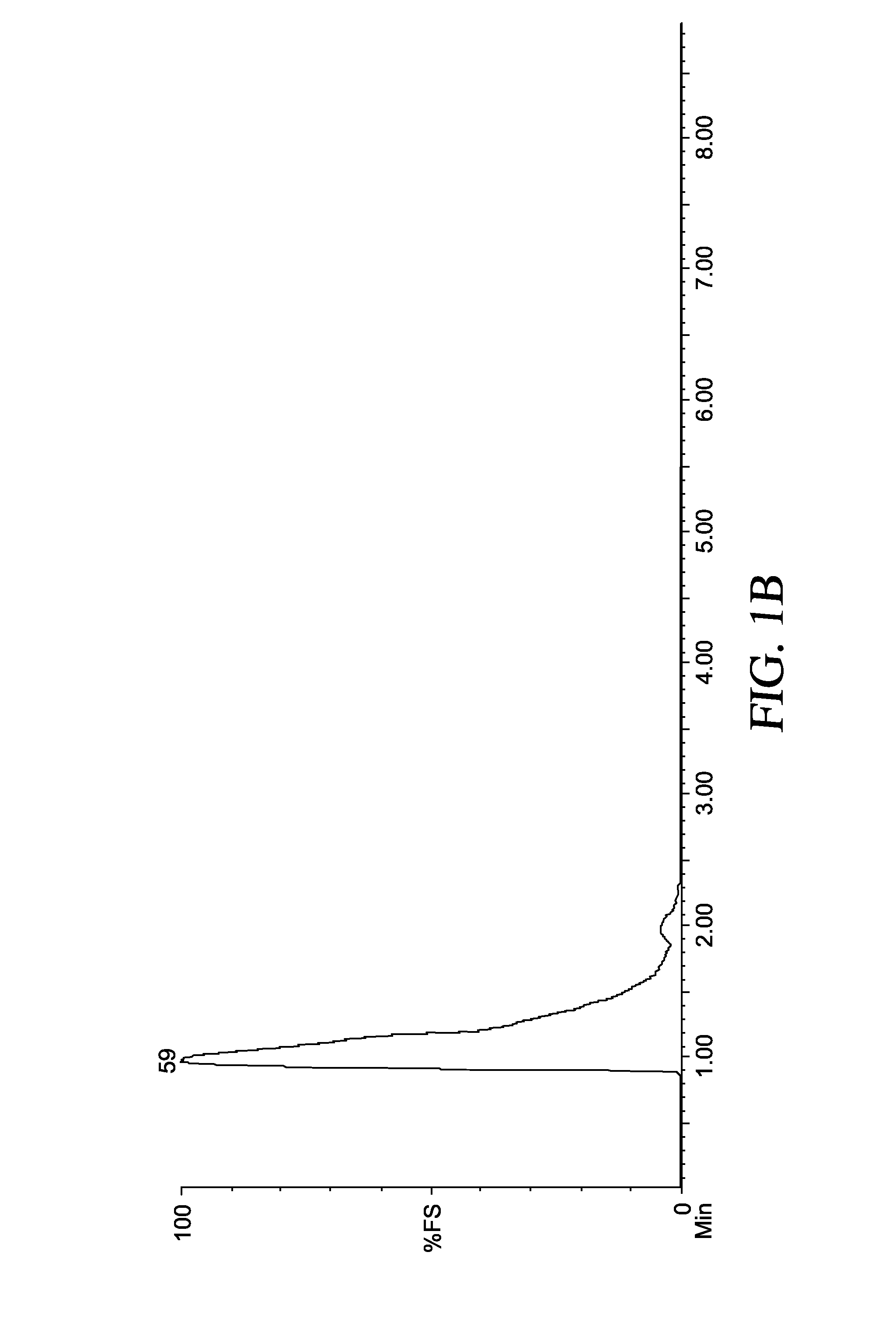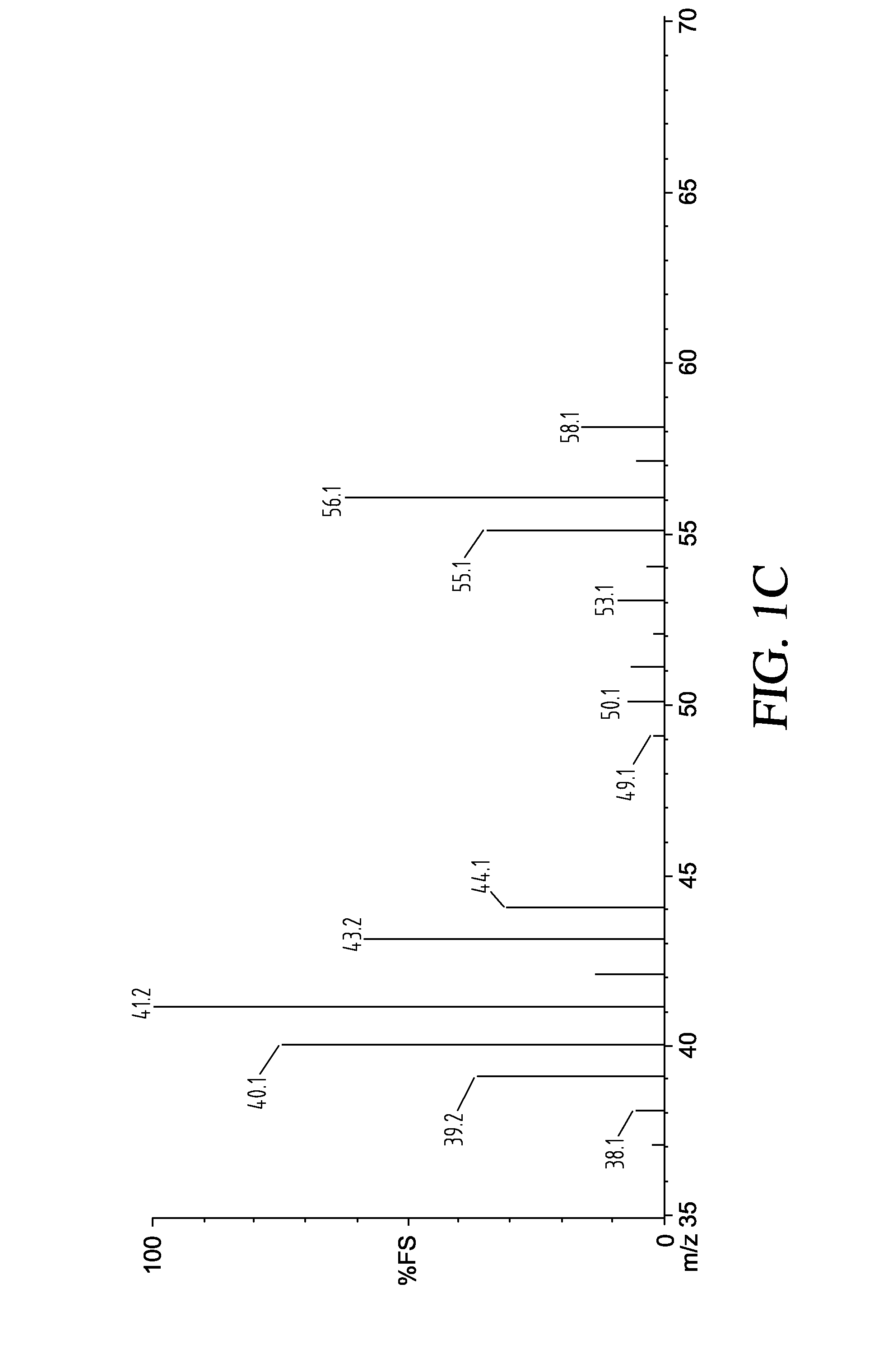Lithium-porous metal oxide compositions and lithium reagent-porous metal compositions
a technology applied in the field of lithium reagents and metal compositions, can solve the problems of difficult organic synthesis of reagents, added additional hazards, and high reactiveness of reagents
- Summary
- Abstract
- Description
- Claims
- Application Information
AI Technical Summary
Benefits of technology
Problems solved by technology
Method used
Image
Examples
example 1
Preparation of Li-AG (10% w / w)
[0057]In a He glove box 3.16 g of lithium ribbon (1.425 g / ft) was weighed out and cut into small pieces and coated thoroughly with 28.4 g Alumina gel (AG) before putting into the steel reactor. The steel reactor was heated to 100° C. for 6 hours, 165° C. for overnight, 182° C. for 8 hours and 190° C. for overnight. The steel reactor was cooled and transferred into the glovebox. A small representative sample of 76.7 mg was tested for H2 evolution with water. The amount of H2 collected came out to be equivalent to 9.2% of Li. Variations in the amount of lithium loadings have been prepared ranging from 5 wt % to 40 wt % by varying the stoichiometric ratio of lithium metal to porous alumina gel.
example 2
Preparation of Organolithium Species Stabilized Inside Lithium-Alumina Gel
[0058]
RX+2Li in γ-Al2O3—→RLi+LiX
where RX can be halides (chloride, bromide or iodides) of aliphatic (methyl, butyl etc), aromatic (Phenyl), benzylic, allylic, homoallylic, propargyllic, sec-alkyl, tert alkyl or neopentyl groups.
[0059]1 g 10% (14 mmole Li) Li in γ-Al2O3 was taken in a round bottom flask and chilled in a dry ice-acetone bath at −78° C. followed by dropwise addition of methyl iodide (2 mL) (neat) into the stirring slurry. The reaction was stirred cold for 2 hours. The excess methyl iodide was distilled off after the addition was complete and the mixture reached room temperature. A small amount of ethane and 12 was produced during this preparation, but this Wurtz coupled product could be minimized by maintaining the cold temperature for a longer duration. The strength of MeLi in alumina was determined through the nucleophilic addition reaction with excess benzophenone. Between various runs, the lo...
example 3
Preparation of Organolithium-Alumina Gel with TMEDA Stabilizer
[0062]In a flask containing 2 g of Li-AG (25% Li by weight) a mixture of 2 g TMEDA, 3 g n-butyl bromide in 20 mL of pentane was distilled in and stirred at −80 C for 3 hours, followed by a replacement by a dry ice bath at −40° C. and stirring the reaction overnight till it reached room temperature. The solvents were removed under vacuum to afford a grey free flowing powder. 200 mg of this material was reacted with 1.1 mmole (200 mg) of PhCOPh to afford butyl diphenyl alcohol in 60% yield. FIG. 1A shows the 1H NMR of the butyldiphenyl alcohol product.
[0063]The presence of the butyl anion was also confirmed by running a gas evolution reaction of this material with water and analyzing the gas by GC-MS that indicated formation of butane (MW=58) according to the following reaction. See FIGS. 1A-1B.
C4H9Li+H2O→C4H10+LiOH
PUM
| Property | Measurement | Unit |
|---|---|---|
| temperatures | aaaaa | aaaaa |
| temperatures | aaaaa | aaaaa |
| temperatures | aaaaa | aaaaa |
Abstract
Description
Claims
Application Information
 Login to View More
Login to View More - R&D
- Intellectual Property
- Life Sciences
- Materials
- Tech Scout
- Unparalleled Data Quality
- Higher Quality Content
- 60% Fewer Hallucinations
Browse by: Latest US Patents, China's latest patents, Technical Efficacy Thesaurus, Application Domain, Technology Topic, Popular Technical Reports.
© 2025 PatSnap. All rights reserved.Legal|Privacy policy|Modern Slavery Act Transparency Statement|Sitemap|About US| Contact US: help@patsnap.com



